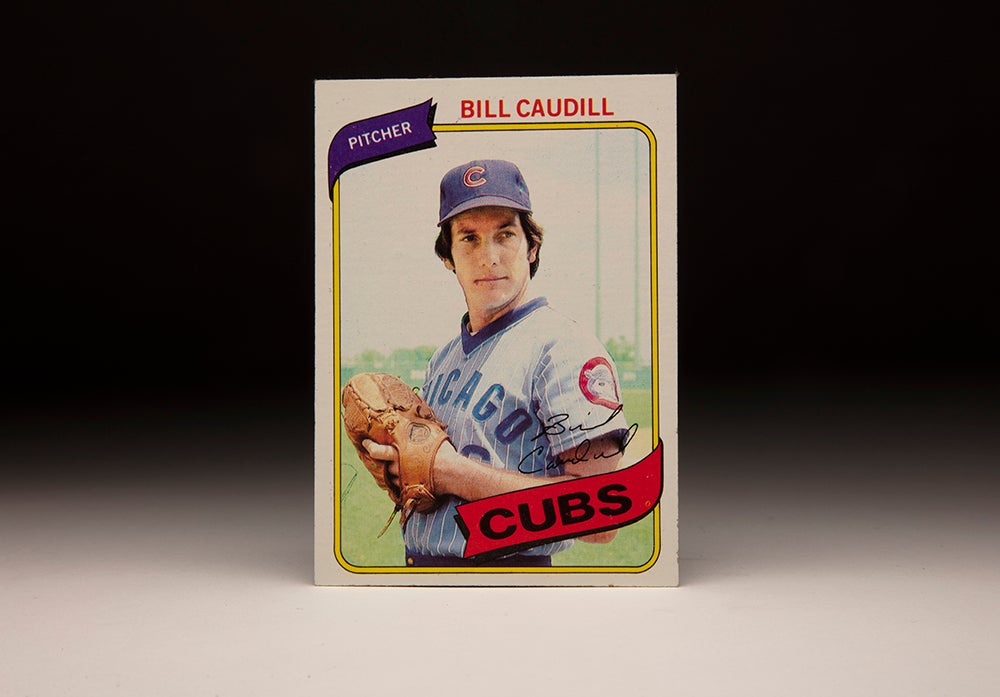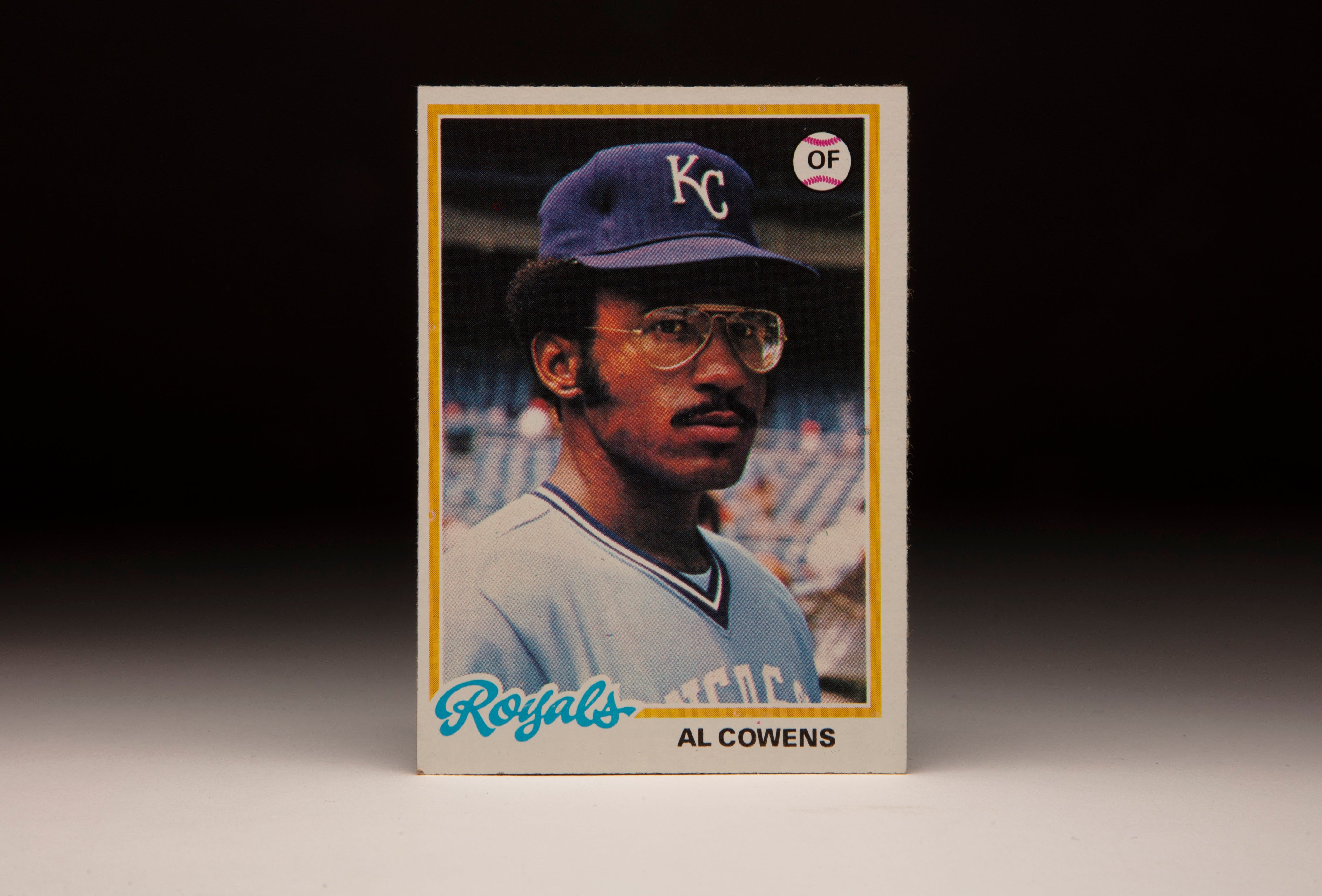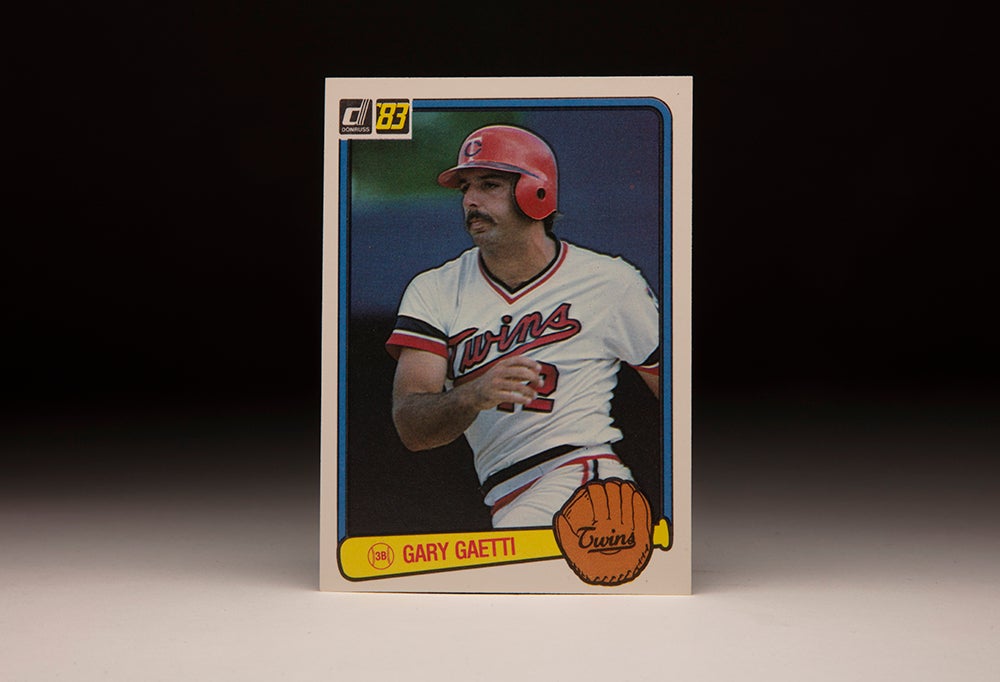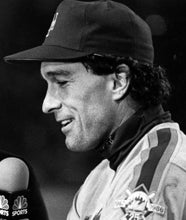- Home
- Our Stories
- #CardCorner: 1982 Donruss Jody Davis
#CardCorner: 1982 Donruss Jody Davis
Playing the game’s most demanding position, Jody Davis reached offensive and defensive standards like few catchers before him.
And though his big league career lasted just 10 seasons, he left behind a legacy of durability that hardly any of his peers could match.
Davis was born Nov. 12, 1956, in Gainesville, Ga., where he was raised. Following graduation from North Hall High School in Gainesville and a stellar American Legion baseball career, Davis enrolled at Middle Georgia State University in Macon. The Mets selected Davis in the third round of the January 1976 MLB Draft – a process that considered only college players, most of whom came from the junior college ranks.
Davis signed and reported to the Mets’ Appalachian League team in Marion, Va., that summer, where he hit .232 in 50 games. In 1977, Davis moved up to Little Falls, N.Y., where he hit .290 in 64 games and showed power by hitting 11 doubles and 11 home runs.
Now squarely on the Mets’ radar, Davis hit .262 with 16 homers and 94 RBI for Class a Lynchburg in 1978. He followed that with 21 homers and 91 RBI for Double-A Jackson, pacing the Texas League in game-winning hits. But on Dec. 10, 1979, the Mets traded Davis to the Cardinals for lefty reliever Ray Searage in a one-for-one swap of minor leaguers.
Then, Davis’ career path took a dramatic turn when he reported to Cardinals’ Spring Training camp in St. Petersburg, Fla., in 1980 and was soon hospitalized.
“I woke up one morning and I felt lousy, like I had the flu,” Davis told the Chicago Tribune. “I also felt a great urge to throw up – and I did. All I threw up was blood.”
Taken to the hospital, Davis underwent surgery for what was thought to be an ulcer and had about a quarter of his stomach removed. But soon after being released, Davis began vomiting blood again. This time, surgeons found an artery that was leaking blood – due to a congenital defect – and fixed the issue.
“I guess I might have set some kind of record for the St. Petersburg hospital,” Davis said. “Before, during and after the two operations, I had to have quite a few transfusions. In all, they gave me 31 pints of blood.”
Davis, who lost about 40 pounds during the ordeal, returned home to Georgia to recuperate before joining the Class A St. Petersburg Cardinals in July. He finished the season with Double-A Arkansas but was left off the 40-man roster that fall.
On Dec. 8, 1980, the Cubs took a flyer on Davis and selected him in the Rule 5 Draft. That meant Chicago would have to keep Davis on the big league roster for all of 1981 or offer him back to the Cardinals.
Davis saw little action early in the season, getting his first playing time against the Cardinals in the Cubs’ 10th game of the season on April 21 and then not appearing again until May 7. But the Cubs traded catcher Barry Foote to the Yankees on April 27, and Davis began to see regular action by mid-May. He hit his first homer on June 11 against the Giants – the day before the season was interrupted by the strike.
“He’s going to keep playing,” Cubs manager Joey Amalfitano told United Press International. “Here’s a guy with no major league experience who has gone back there and taken over.”
When the season resumed, Davis was the Cubs’ starting catcher and rarely had an off day the rest of the year. He finished with a .256 batting average, four homers and 21 RBI in 56 games while finishing in second place in the NL with a caught stealing percentage of 42.6.
Surprisingly, the Cubs acquired Keith Moreland from the Phillies prior to the 1982 season and installed him as the starting catcher. But by early May, Moreland had been moved to right field and Davis returned to the lineup.
“The first part of Spring Training was touchy because neither of us knew each other,” Davis told the Chicago Tribune about his relationship with Moreland. “And I knew the way he was hitting the ball, he’d play. He could have snubbed me or held it over me. He never did. We became closer friends every day. Keith is one of the best friends I have on the team.”
Davis put together a 14-game hitting streak in mid-June and pushed his batting average to .261 by the end of the year to go with 12 homers and 52 RBI. Once again, he was more than solid defensively – finishing fifth in the league by throwing out 37.5 percent of attempted base stealers and leading all NL catchers with 11 double plays.
“Give Jody Davis three or four months of playing every day,” said Birdie Tebbetts, then a scout for the Yankees and formerly a big league catcher, “and he’s got a chance to turn into a big hitter.”
In 1983, Davis fulfilled Tebbetts’ prophesy. He became third catcher in history to play in at least 150 games at catcher and hit 24-or-more home runs in a season, joining Carlton Fisk and Gary Carter. Only Todd Hundley has done it since.
Davis finished the 1983 season with 24 home runs and 84 RBI while batting .271. And while his defense suffered a bit – he led the NL with 21 passed balls – his all-around play earned him a 21st-place finish in the NL Most Valuable Player vote.
Then in 1984, Davis and the Cubs had a season for the ages. He drove in 15 runs in April, compiled a 15-game hitting streak that ended June 2 and – while often hitting seventh in the lineup – blasted 19 home runs and tallied 94 RBI as Chicago advanced to the postseason for the first time since 1945. Davis was named to his first All-Star Game and finished 10th in the NL MVP voting.
In the NLCS vs. the Padres, Davis hit .389 with two homers and six RBI – going deep in both Games 4 and 5. Davis’ RBI double off Goose Gossage in the eighth inning of Game 4 tied the game at five – leaving the Cubs needing just one run to clinch the series. But Steve Garvey homered in the bottom of the ninth to give San Diego a 6-5 win and tie the NLCS at two games apiece.
The next day, Davis’ solo homer in the second inning gave the Cubs a 2-0 lead. But San Diego rallied with two runs in the sixth and four in the seventh to take a 6-3 advantage – and Gossage shut the door with two scoreless innings, getting Davis to ground out to end the game and send the Padres to the World Series.
“I just never expected this to happen,” Davis told the New York Times News Service the day after the Game 5 loss. “It never really occurred to me that our season was going to end.”
Asked if he would watch the World Series between the Padres and the Tigers, Davis said: “I don’t know. I may be out in a field somewhere hunting deer.”
Davis would never again play in the postseason, having been traded to the Braves by the time the Cubs won the NL East again in 1989.
In 1985, the Cubs finished 77-84 and Davis hit just .232 with 17 homers and 58 RBI. He suffered from a viral infection during the season and also had another bout of intestinal bleeding that required hospitalization.
But the Cubs still believed Davis was a big part of their future and signed him to a three-year deal worth just shy of $3 million on the eve of his scheduled arbitration hearing in February of 1986.
“I know I am capable of a much better season and much better statistics than I showed last year,” Davis told the Chicago Tribune. “I would like to play my whole career in Chicago.”
In 1986, Davis had his best all-around season in the big leagues. He hit .250 with 21 homers and 74 RBI while becoming the fifth catcher since end of World War II to post a season with at least 100 assists, joining Johnny Bench, Gary Carter, Jim Sundberg and Tony Peña on that list. He led NL catchers with a 47.6 caught stealing percentage, was second in fielding percentage with a mark of .992 and won his first Gold Glove Award while earning his second All-Star Game selection.
His defensive Wins Above Replacement mark of 3.3 was the best of any player in the big leagues.
But the 1986 season marked the third time in four years that Davis had caught at least 145 games. The workload – along with playing half his games at Wrigley Field, where night baseball was still in the future and day games in the summer meant soaring temperatures – began to catch up with Davis in 1987 when he appeared in 125 games and his production fell off offensively and defensively.
“Catching every day at one o’clock takes it out of you,” Davis told the Atlanta Constitution in 1989. “Especially during the summer. It can be just as hot and humid in Chicago as anywhere.”
He spent the offseason lifting weights and was noticeably stronger heading into the 1988 campaign – and was the Cubs’ longest-tenured player at that point. But he was bothered by injuries throughout the year and had played in only 88 games – hitting .229 with six homers and 29 RBI – when the Cubs traded him to the Braves on Sept. 29 in exchange for Kevin Blankenship and Kevin Coffman.
Davis and the Braves immediately agreed to a two-year extension worth about $1.7 million.
“Every half hour I sit around and think about something else I can do now because I will be at home in the summer,” Davis, who made is offseason home in Gainesville, told Gannett News Service. “It’s been 13 years since I have seen spring around my house. My wife is bouncing off the walls.”
Davis, however, struggled to adjust to his new surroundings. His batting average never topped .194 after April 18 as he dropped from the No. 5 to the No. 7 spot in the lineup and then lost his starting job altogether, falling behind Bruce Benedict and then John Russell on the depth chart.
In 1990, the Braves brough in veteran Ernie Whitt to platoon with Davis and then recalled Greg Olson from the minors while Davis was in a 1-for-21 skid at the plate. On May 16, the Braves released Davis and his .071 batting average.
He signed two weeks later with the Tigers but appeared in only three games with their Triple-A club in Toledo and did not return to the big leagues. On Sept. 30, Detroit released Davis, ending his career.
Davis would go on to manage and coach in the minors, skippering in the Florida State League for the Cubs in 2007-08 and with the Reds’ Double-A and Triple-A clubs in 2018-19.
He finished his playing career with a .245 batting average, 127 home runs, 490 RBI – and the cheers of millions of Cubs fans for his play in 1984.
“That year is still the highlight of my career,” Davis told the Atlanta Constitution in 1989.
For a player whose health issues nearly cost him his life before he ever got to the majors, Davis authored more than his share of highlights.
“When you’re looking for offense and leadership,” Cubs general manager Dallas Green told the Associated Press in 1985, “I think Jody gives that to you.”
Craig Muder is the director of communications for the National Baseball Hall of Fame and Museum
Related Stories

#CardCorner: 1985 Topps Joaquín Andújar

#CardCorner: 1980 Topps Bill Caudill

#CardCorner: 1978 Topps Al Cowens

#CardCorner: 1983 Donruss Gary Gaetti
Related Stories

#CardCorner: 1985 Topps Joaquín Andújar

#CardCorner: 1980 Topps Bill Caudill

#CardCorner: 1978 Topps Al Cowens








